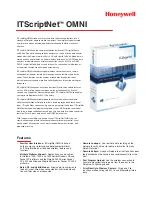
User’s Guide
65
Internet Security and Privacy
The simplest encryption systems use letter shifting, in which a message is
encrypted by shifting every letter n letters later in the alphabet. For example,
say A is changed to B, and B to C, etc. As long as the recipient knows how you
shifted the letters, they can easily decrypt the message by reversing the
process. Of course, a brute force approach to breaking this sort of encryption
would simply try all possible 26-letter combinations until the final message
was retrieved—not a very strong method of encryption.
Computer encryption uses a much more difficult technique of hiding the
message. Rather than a simple letter-shifting scheme, the original message is
transformed by a mathematical algorithm. The algorithm uses a secret “key”
to scramble the message, and the key is necessary to unscramble it. The key is
similar to a house key: The more teeth a key has, the more difficult it is to pick
the lock. Similarly, “strong” encryption uses keys with many “teeth”—in this
case, bits of data.
There are two commonly used levels of encryption. The international standard
is 40-bit encryption, but some sites in the United States use a higher level of
128-bit encryption. The number of bits indicates the length of the key used to
encrypt data. The longer the key, the stronger and more secure the encryption.
On the Web, your browser works with secure Web sites to establish and
manage the encryption that secures information. If your browser security
options include the Secure Sockets Layer (SSL), which ensures
data-transmission privacy, you should turn on this option to facilitate secure
data transmission.
NOTE:
Guard Dog’s CheckUp automatically checks your browser’s
security level, and lets you know if you need to change it.
Security on the Web
One of the most exciting Web developments is the evolution of downloadable,
executable programs. Java and ActiveX are two tools that help developers
create programs that can “live” inside Web pages, and use your Web browser
to automatically run over the Internet. Java allows Web pages to host small
programs called “applets.” When Java-enabled browsers access a Web page
containing Java, they automatically download and run the applets they find
on the page. This is an intriguing development, since it makes it possible to
download and run programs over the Web. Complete, Web-driven programs
written entirely in Java are on the horizon. ActiveX is a similar technology,
developed by Microsoft.
Содержание Guard Dog
Страница 1: ...McAfee Guard Dog User s Guide...
Страница 10: ...Table of Contents x McAfee Guard Dog Technical support 74 McAfee training 74...
Страница 22: ...Installing Guard Dog 12 McAfee Guard Dog...
Страница 36: ...Quick Tour of Guard Dog 26 McAfee Guard Dog...
Страница 44: ...Customizing Guard Dog 34 McAfee Guard Dog...
Страница 52: ...Privacy Features 42 McAfee Guard Dog...
Страница 62: ...Security Features 52 McAfee Guard Dog...
Страница 68: ...Using AntiVirus Features 58 McAfee Guard Dog...
Страница 82: ...Internet Security and Privacy 72 McAfee Guard Dog...














































